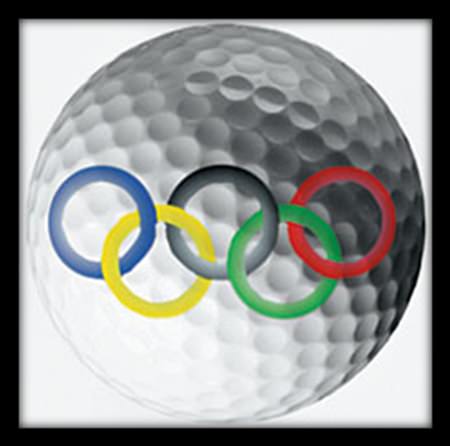Fancy a bet on picking the winning nationality of golf’s gold medals in Rio in 2016? Here’s a tip; select the USA to win both, especially if the odds for a double win – men’s and women’s events – are good.
Why? Because the way the competition will be structured means the USA have twice the chance of any other country in the men’s competition, and just less than that in the women’s.
The last time golf was played at the Olympics was in 1904, at St Louis, USA. In 2009 golf was voted back into the Olympic Programme starting with Rio in 2016. In preparation for this bid, the World Amateur Golf Council changed its name in 2003 to the International Golf Federation (IGF) and became the world governing body for golf.
 Golf; returning to the Olympics after an absence of 112 years.
Golf; returning to the Olympics after an absence of 112 years.
Prior to this, the World Amateur Golf Council was mainly concerned with arranging international amateur competitions such as the Eisenhower Trophy for men and the Espirito Santo Trophy for women. But with inclusion into the Olympics came the need for compliance with IOC requirements such as the one stating each sport must have one governing body – world-wide. Thus the IGF was formed.
Back in 2009 many in golf wondered if the International Olympic Committee (IOC) would accept the format long used by golf for its international amateur competitions. The team-focused Eisenhower Trophy format has had universal acceptance for many years. The Ryder Cup is another example of a popular team format. So, would there be any chance of using a team-focused format for the Olympics, one wondered?
Not if it meant some of golf’s biggest names couldn’t compete. Not if it meant the world’s biggest commercial market, the USA, was under-represented. Not if it meant the chances of an under-dog win would be greatly increased if combined team scores or a team match-play format were to be used. Under-dogs winning don’t increase US TV ratings as much as high-profile American golfers doing well, and that wouldn’t please the IOC’s major sponsors.
What, I wonder, were the odds of the money-making machine that is the IOC suggesting to the IGF, back in 2009, a format that would most likely result in the acceptance of golf as an Olympic sport? Somewhere between 99 and 100 per cent, I suspect.
Both the format and the qualification system for men’s and women’s golf at the Rio 2016 Olympic Games had to be ratified by the IOC Executive Board. Given this, the IGF would have had a clear understanding of what would have been accepted and what wouldn’t.
The IGF proposed to the IOC a format of a 72-hole individual stroke play competition for both men and women. In the event of a tie for either first, second or third place, a three-hole playoff will determine the medal winner(s). So, there you have it; yet another individual 72-hole stroke play event. Wow, awe-inspiring, overwhelming, breathtaking. Such insightfulness. I can’t wait.
The IOC restricted the IGF format to a field of 60 players for each competition. It was intended that each country be represented by two golfers, whose eligibility would be determined by the official world golf rankings, with a few exceptions. As the host country, Brazil will be guaranteed one Brazilian female and male golfer, if not otherwise eligible.
Also the five continents of the Olympic Movement (Africa, Americas, Asia, Europe and Oceania) will have at least one golfer in each of the men’s and women’s events.
In keeping with sponsor desires for high-profile names, the IOC suggested another exception; all of the top-15 world-ranked players will be eligible to compete, with a limit of four players from one country. Beyond the world top-15, players will be eligible based on world rankings, with a maximum of two from each country that does not already have two or more players among the top-15.
Put another way, if the Olympics were to be held this week, the US Team would include Bubba Watson, Matt Kuchar, Tiger Woods and Jim Furyk. Missing out would be Jordan Speith, Phil Mickelson, Zach Johnson and Dustin Johnson, all ranked in the world’s top-15, but not as high as the first four.
Another way to view this is to question the fairness that sees the US get four players into a tournament where every other country will have a maximum of two. The same applies to the women where the US is the only nation to have four in the top-15. South Korea has three, but as is the case with the men, no other nation has more than two. An even playing field it is not.
Unlike other sports that struggle to draw the line between amateur and professional status, the line in golf is well-defined. Here was an opportunity for the IOC to honour what amateur sport is all about; by restricting participation to an amateur teams event and follow the existing format used by the IGF. Unfortunately, no matter how appealing, amateur golfers representing their countries don’t attract sponsor interest to the level that Tiger Woods, Rory McIlroy and others do. Dollars first, sport second.
Some sports, golf included, offer a level of financial reward that is nothing short of obscene. It would have been nice to have celebrated an Olympic sporting achievement that was first and foremost a sporting success, and not a financial one.
Golfnutter




